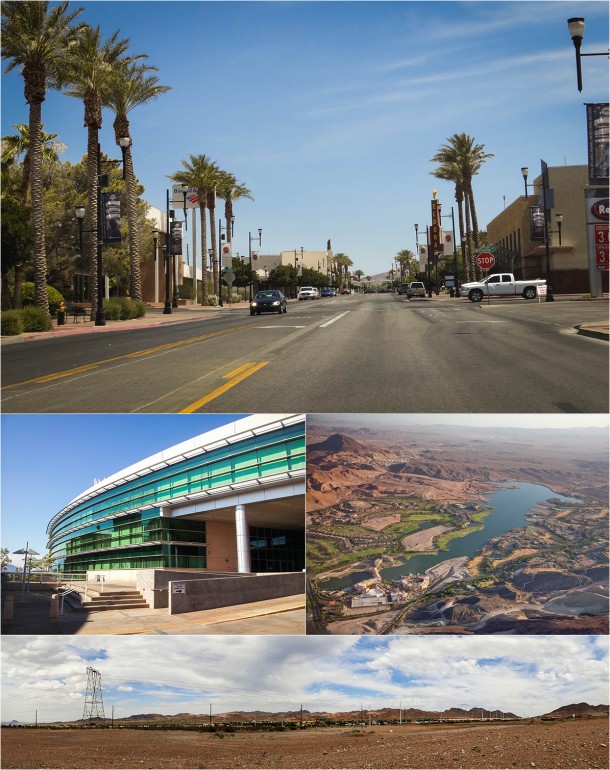
Water Street Historic District of Downtown Henderson, aerial view of Lake Las Vegas, Foothills nearby Henderson, Henderson City Hall.
On this date, April 16, 1953 Henderson, Nevada was officially incorporated on April 16, 1953 as the City of Henderson. Henderson is the second largest city in Nevada, after Las Vegas, with a population of 257,729 in the 2010 census. The city is part of the Las Vegas metropolitan area, which spans the entire Las Vegas Valley. Henderson occupies the southeastern end of the valley.
The township of Henderson first emerged in the 1940s during World War II with the building of the Basic Magnesium Plant. Henderson quickly became a main supplier of magnesium in the United States, which was called the “miracle metal” of World War II. The plant supplied the US War Department with magnesium for incendiary munition casings and airplane engines, frames, and other parts. A quarter of all US wartime magnesium came from the Henderson Plant to strengthen aluminum, using 25% of Hoover Dam’s power to separate the metal from its ore by electrolysis.
In 1988, the PEPCON rocket fuel factory in the modern-day Gibson Springs neighborhood of Henderson caught on fire. The fire quickly spread and engulfed the factory, spewing rocket fuel, smoke, and toxic fumes from the building. The factory was subsequently obliterated by a massive explosion caused by the fire, followed by six smaller explosions. The explosions sent shockwaves through the Las Vegas Valley, shattering glass and damaging buildings miles away in nearby Las Vegas. The explosions also caused some earthquakes, some of which measured over 3.0 on the Richter magnitude scale. Two people were killed, and an additional 372 people were injured.
The events of the PEPCON factory disaster spurred development in Henderson from its historical industrial development to largely residential and commercial as it is today. There are no signs of the PEPCON explosion today, and the site now consists mostly of office buildings.
Photo by: Wikipedia.org
Tags: On this date